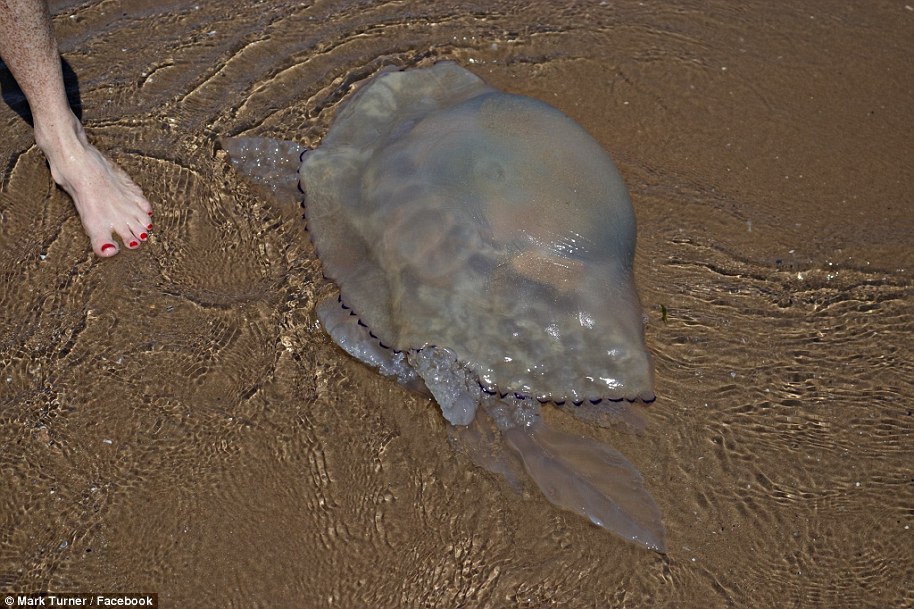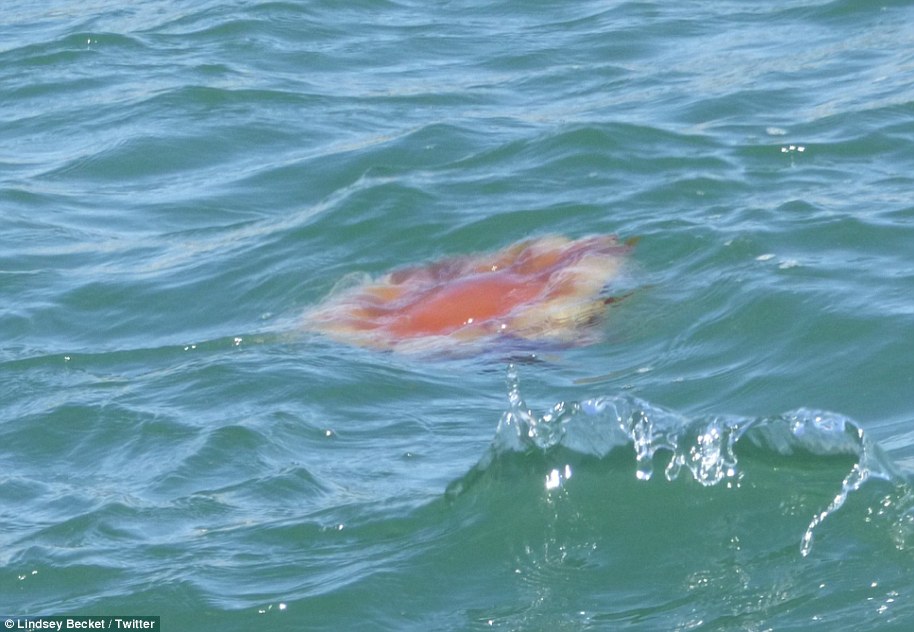Rare transparent jellyfish washes up on a British beach with its prey STILL trapped
Swarms of powerful jellyfish are descending on the beaches of the British Isles as they remain in the grip of a heatwave.
While the marine wildlife is no stranger to British waters, sightings of the infamous lion’s mane species have increased dramatically as our seas begin to warm.
Lion’s mane jellyfish can grow longer than a blue whale and have the most severe sting of any jellyfish species found in British waters, often resulting in their victims being hospitalized.
A lion’s mane jellyfish spotted by Ann Dunne in Ireland as swarms of powerful jellyfish descend on the beaches of the British Isles

This barrel jellyfish was spotted by Mark Turner on Rhossili Beach in Swansea, South Wales

A lion’s mane jellyfish spotted by Lindsey Becket in Kames Bay on the Isle of Cumbrae in Scotland
And the venomous creatures have become increasingly common in recent years as global warming has made our ocean environment a more attractive location for them.
Dr. Peter Richardson, head of ocean recovery at the Marine Conservation Society, said: ‘Our national research indicates a significant recent increase in the number of jellyfish species in British seas, particularly the barrel jellyfish.

A lion’s mane jellyfish spotted by Charlie Farrell in Anglesey, Wales
“The million dollar question is: Why is this happening? At this point, we just don’t know.”
Lion’s mane sightings in Blackpool, Anglesey and Galway follow the mass stranding of hundreds of barrel jellyfish in Weymouth, Dorset, last week. The creatures can grow up to 90 cm wide and weigh up to 25 kg.
With 6-foot tentacles hanging below, they are capable of delivering a powerful sting even after washing ashore.
Several of the gelatinous creatures were washed up on beaches along the west coast of Lancashire – including in Blackpool – last month, while large numbers were spotted in Hythe, Kent, at the weekend and some swimmers even suffered stings.
Three were hospitalized after being stung by lion’s manes during warm weather in Galway, Ireland, last month. One woman was stabbed in the face, prompting the lifeguard on duty to raise the red flag and warn people not to enter the water.
Ten of the creatures were spotted floating in coastal waters by a member of a triathlon group during a 4km swim in Galway Bay.
Jellyfish are most commonly found in warm, shallow waters near beaches. Most species found in Britain can only cause a mild sting.
However, if you see them gathered in large clusters, also called flowers, it is advisable to leave the water as quickly as possible.
If you are stung, leave the water and gently remove any stingers with tweezers before covering the affected area with vinegar or soaking it in hot water.
